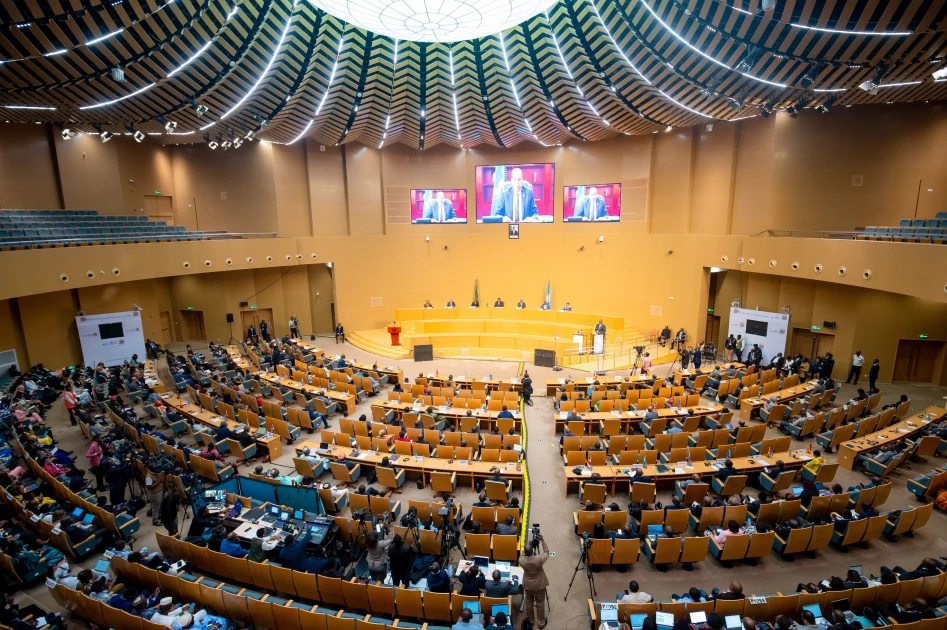African leaders call for urgent action to end preventable deaths of women and children

African health ministers and government representatives at the 75th Session of the World Health Organization (WHO) Regional Committee for Africa (RC75). PHOTO| COURTESY

Audio By Vocalize
The Seventy-fifth Session of the World
Health Organization (WHO) Regional Committee for Africa (RC75) has put the
health and well-being of women, children, and adolescents (WCAH) firmly in the
spotlight, with leaders and partners calling for accelerated action, stronger
accountability, and greater investments to end preventable deaths.
At the meeting, held this week, 43 statements were delivered – 30 from Member States and 13 from partners – underscoring the urgency of tackling Africa’s heavy burden of maternal and child mortality.
Africa accounts
for 70% of global maternal deaths
and 55% of child deaths,
despite significant progress between 2000 and 2023, when maternal deaths fell
by 40% and under-five mortality by more than half.
“Every day,
roughly 800 women and newborns die due to preventable causes related to
pregnancy and childbirth,” delegates heard, with WHO warning that current
progress remains uneven
and insufficient to meet the 2030 Sustainable Development Goals.
WHO presented
its working paper “Accelerating
progress in the health and well-being of women, children and adolescents by
transforming health systems in the African Region”, outlining three
flagship approaches: prioritizing health investments, expanding service
delivery capacity, and embedding equity and resilience into essential health
services.
Member States
echoed these themes. Kenya raised concerns over resource shortages, noting that
“key challenges include
commodity gaps and skilled health workforce attrition.”
Seychelles called for robust data to guide decision-making, while Zambia
stressed that “we
are using data to drive health programmes and address challenges such as health
systems inequalities.”
Malawi drew
attention to high teenage pregnancy rates, saying it was working to improve
training and access to life-saving commodities.
With global health financing under strain, countries emphasized the need for domestic investments. “We particularly call for investment in health as a driver of socio-economic development,” said the representative from Seychelles.
A Lancet study cited at the meeting
warned that cuts to U.S. funding and the dismantling of USAID could result in 14 million additional deaths
by 2030, including 4.5 million among children under five.
Senegal, a
member of the Global
Leaders Network (GLN), urged stronger accountability mechanisms
within the African Union, stating: “Senegal calls for joining the Global Leaders
Network to institutionalize accountability for the health of women, children
and adolescents within the organs of the African Union.” Kenya
backed the call, pressing for “stronger regional mechanisms for accountability
and data use.”
Civil society
partners reinforced this message. The Partnership for Maternal, Newborn and Child
Health (PMNCH) noted:
“We know what
works; the challenge is ensuring commitments are implemented, tracked and
reviewed transparently, with communities, youth and civil society meaningfully
engaged.”
Opening the
session, Zambian President Hakainde
Hichilema offered a deeply personal reflection on Africa’s
health challenges:
“I was born
in a health center with no water, no electricity. My grandmother was the birth
attendant. This remains a reality for too many African women and children
today.”
He outlined
Zambia’s reforms, from expanding health facilities and recruiting specialists
to linking health and education so that over two million children returned to school.
Looking ahead, he urged African leaders to prioritize four actions: resilient health systems,
local manufacturing, regional solidarity, and stronger alignment with global
frameworks.
“These challenges are only beginning, therefore we need to respond positively and aggressively. We must see the opportunity in challenges,” he added, pledging Zambia’s leadership in vaccine manufacturing.



Leave a Comment